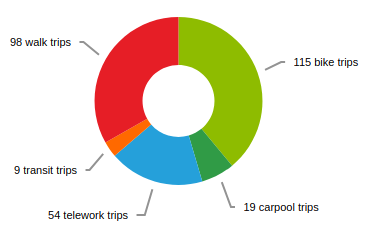RideAmigos Customers are Winners at 2018 Association for Commuter Transportation (ACT) Awards
On August 1, the Association for Commuter Transportation (ACT) hosted its 2018 international conference. This year’s gathering was held in Anaheim, California, and during the event, 15 individuals or organizations received awards for their outstanding achievements in transportation demand management (TDM). The entire RideAmigos team is excited to announce that eleven of the twenty-nine ACT Award finalists and four of the winners use RideAmigos to power their innovative commuter programs.
First, the Parking Services division at California State University-Los Angeles copped a Marketing and Outreach award for its successful efforts to promote alternatives to solo driving, implement forward-thinking commuter projects and policies, and reduce the local environmental impact of commuting.
Next, the City of Austin Smart Commute Rewards program earned an award in the Commuting Options category. This program allows city employees in the fast-growing city of Austin, Texas earn rewards for logging commutes with solo driving alternatives. The program’s manager, Tien-Tien Chan, said, “We are honored to be selected for this award,” and added that, “I find it immensely valuable to see how other companies and jurisdictions are creatively tackling the problems that we all face.”
Third, Go Redmond won in the Commuting Options – Biking category. The initiative is a partnership between the Greater Redmond Transportation Management Association (GRTMA), King County Metro, and the City of Redmond, and it aims to increase bicycle ridership year-round as a commuting alternative. Go Redmond also provides a wealth of informational resources to people and organizations looking to reduce their carbon footprint while embracing smarter transportation alternatives.
Finally, the University of California-Los Angeles (UCLA) Transportation department captured the Commuting Options – Public Transportation award for its intensive efforts to make public transit, cycling, carpooling, and vanpooling more accessible to its commuter base of 80,000 staff and students.
All four of these organizations rely on the revolutionary, tool-rich RideAmigos platform to create, administer, and power their commuter programs. We’d be proud to be a part of your success story in 2019. Get started with RideAmigos today, and improve mobility, sustainability, and organizational health and wellness by putting the power of our cutting-edge software to work for your organization.







 In April 2018, our staff members logged a total of 295 smart trips. We make use of nearly every mode imaginable, from
In April 2018, our staff members logged a total of 295 smart trips. We make use of nearly every mode imaginable, from